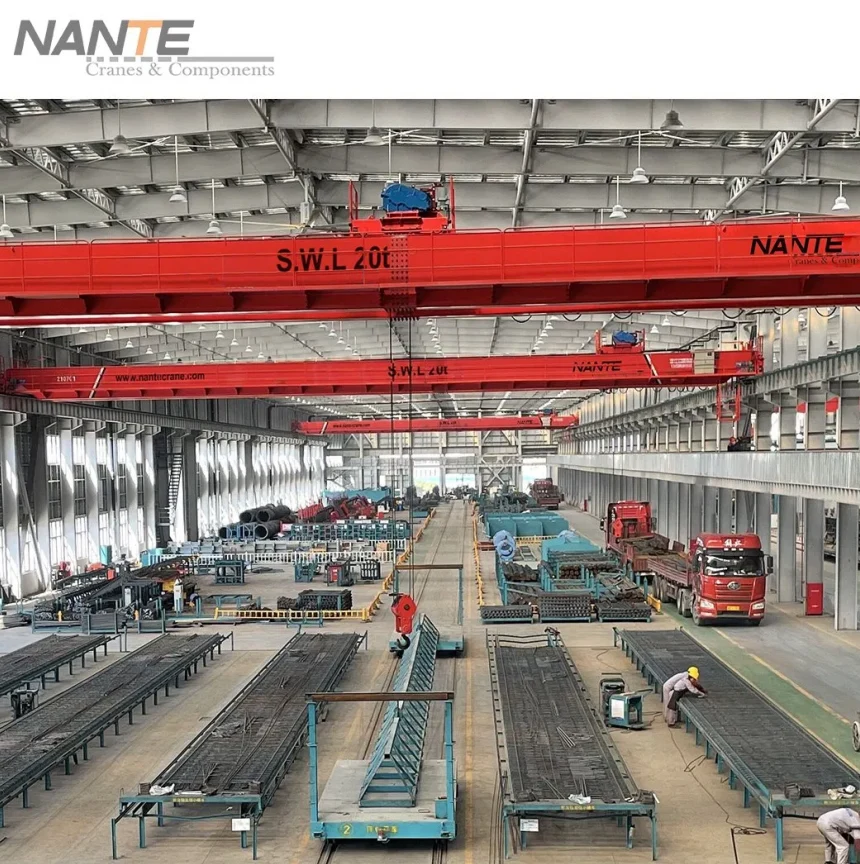How to Reduce Total Cost of Ownership (TCO) When Buying Cranes
How to Reduce Total Cost of Ownership (TCO) When Buying Cranes
Date: 2025-10-31 Share:
When companies buy industrial cranes, they often look only at the starting price. This can miss other costs that add up over time and raise the total cost of ownership, or TCO. Crane cost efficiency means more than just first savings. It involves cutting full lifecycle expenses. These include upkeep, parts supply, power use, and steady service. All this leads to better returns on investment in lifting tasks. Firms that focus on these areas cut stoppages, lengthen machine life, and boost profits. This guide shares practical steps to lower TCO. It pulls from common industry ways to aid smart choices for lasting worth.
Understanding Total Cost of Ownership (TCO) for Cranes
Total cost of ownership for cranes shows the full money view. It goes well past the buy price. Costs cover getting the crane, setup, running it, fixing it, upkeep, and even end disposal. This spans a usual 10-20 year life. Skipping TCO leads to surprise bills. For example, bad parts cause sudden fixes. Or weak motors waste power. Such issues hurt crane cost efficiency. They change a cheap deal into a big problem later. On the other hand, a planned TCO method makes sure each choice aids ongoing work and money watch. Businesses gain steady output and lower bills this way.
Why TCO Matters in Industrial Lifting
TCO review moves attention from quick buys to lasting worth. It stops loss of returns on industrial lifting investments. Take a crane with low start cost but high power need. It might save $50,000 at first. Yet over ten years, it adds $150,000 in power bills. A basic math shows this: TCO equals buy price plus setup plus run costs like power and work plus upkeep and fixes plus end costs minus sell-back worth. Basic data from the field shows run costs can top 70% of TCO. So active handling is key for gains in busy areas like making goods and moving items.
Key Components of Crane TCO
Split TCO into start costs like buy and setup, which make 10-20%. Then come steady costs for power and work, up to 50-60%. End factors like dump or sell add 5-10%. Good life handling stops extra spends. Tools online help compare models by TCO. For one case, add sell-back for easy-build cranes. This can cut 15% of first spend. Such steps aid crane cost efficiency via clear checks.
Strategies to Cut Maintenance Costs in Crane Ownership
Upkeep often takes 20-30% of TCO. But forward plans can stretch crane life by 25%. They also drop surprise stops by half. Move from fix-after trouble to set care times. This opens big savings.
Implementing Predictive and Preventive Maintenance
Set firm plans. Do daily eye checks for damage. Add monthly oil on moving spots. Yearly looks match ASME B30 rules. Tools that predict, like shake checks and IoT watchers, spot breaks ahead. They cut fixes by 10-15%. See this table for compare:
| Approach | Annual Cost Example | Downtime per Event | Total Impact on TCO |
| Reactive | $5,000/event | 8-12 hours | High (frequent surprises) |
| Preventive/Predictive | $1,500/year | 1-2 hours | Low (planned, minimal disruption) |
This way lifts crane cost efficiency. It skips dear urgent calls.
Training Operators for Optimal Crane Performance
Cert classes from OSHA or NCCCO drop wrecks by 40%. They lessen damage via even runs. Skilled groups trim upkeep needs by 20%. Right load care stops stress on lifts and carts. Gains show clear. A $5,000 train spend brings over $20,000 yearly cuts. It raises industrial lifting ROI with less breaks and longer gear life.
Optimizing Spare Parts Management for Long-Term Savings
Parts ready affects stop time. Poor handle can hike TCO by 15-25%. Wise buy and stock plans allow fast fixes sans high rush pays.
Building a Reliable Parts Inventory
Keep common wear goods like lifts, ropes, and stops. Use seller-run stock plans. Pick cranes with swap parts to skip special wait. Fast-change sets cut down time from days to hours. This keeps work flow and crane cost efficiency.
Sourcing Cost-Effective, Compatible Parts
Mix true maker and market options. Choose strong ones to dodge often swaps from low-price picks. A life cost chart shows:
| Part Type | Initial Cost | Replacements (10 years) | Total TCO Impact |
| Cheap Aftermarket | $500 | 5x | $3,000+ (high downtime) |
| Durable OEM | $1,200 | 1x | $1,500 (reliable) |
This stops TCO growth. It backs long industrial lifting ROI.
Enhancing Energy Efficiency to Lower Operating Expenses
Power use makes 15-20% of TCO in crane runs. Smart builds save 20-30%. Payback comes in 2-4 years.
Selecting Energy-Smart Crane Features
Choose shift speed drives or VFDs, energy-catch brakes, and LED lights or controls. They trim top power pull. They grab back energy on down moves. Run power checks to set base use. Track gains after changes. This brings real crane cost efficiency wins.
Lifecycle Energy Management Practices
Use load match to jobs. Add shut-offs for idle times. One sample: $10,000 VFD add on a 50-ton crane saves $3,000 yearly in power. Full ROI hits in under 4 years. This grows industrial lifting ROI. It drops bills sans cut in work.
Ensuring Cost-Effective Service and Support
Service stops cost over $1,000 an hour. Strong ties cut this risk.
Partnering with Responsive Service Providers
Check sellers by deals for 24/7 answer and far checks. One case: Set help fixed a lift break in 4 hours, not 8. This halved fix time. It kept output in a full store.
Long-Term Service Contracts for Predictability
Pack deals hold checks and fixes. They trim per-event pays by 25%. Haggle bulk cuts. Link deals to TCO goals like over 98% up time. Such sure plans steady cash and lift crane cost efficiency.
Calculating Industrial Lifting ROI for Smarter Crane Investments
TCO cuts turn to real gains. Output boosts raise profits by 15-30%.
Step-by-Step ROI Formula for Cranes
Apply: ROI = (Net Gains – Spend Cost) / Spend Cost. Step 1: Find net gains. This means TCO saves plus work boosts, like 15% quick lifts add $30,000 cash. Step 2: Cut costs. Case: $200,000 crane with $50,000 yearly saves in upkeep and power. It gives 25% ROI in year one. Note: (50,000 / 200,000) = 25%. Over 5 years, total saves push ROI up fast.
Real-World Case Studies on TCO Success
A make firm switched to power-save cranes. TCO fell 18% with $25,000 yearly cuts and 2-year payback. Another took predict upkeep. Costs dropped 22% via 70% less stops. This raised industrial lifting ROI a lot.
Discover Nante Crane: Your Partner in Cost-Efficient Lifting Solutions
Nante Crane leads in overhead cranes and parts. It focuses on tough, fit-to-need fixes to cut total cost of ownership for cranes.
With more than 20 years know-how, Nante Crane gives many products. These include single or double beam overhead cranes, gantry cranes, and work station setups. All built for top crane cost efficiency.
Main points cover power-save drives, easy-build plans for simple upkeep, ready parts, and full service nets for low stops.
Their cranes hold loads from 1-500 tons. They fit fields like making, moving goods, and building. They bring top industrial lifting ROI via strong build and new tech like shift speed controls. These cut power by up to 30%.
Set on quality with ISO marks, Nante Crane plans stress full life worth. They aid buyers to hit 15-25% TCO drops via predict upkeep links and world help.
Ready to better crane spends and cut TCO? Reach Nante Crane at Sales@nantecrane.com. Or check www.nantecrane.com for free talk and fit quote. Begin path to better crane cost efficiency and industrial lifting ROI. Ask for TCO check now!
FAQ
What is Total Cost of Ownership (TCO) for Cranes?
TCO covers all costs from buy to dump. It adds upkeep, power, and service. Focus on it keeps crane cost efficiency over the gear life.
How Can I Reduce Maintenance Costs for My Crane?
Set prevent plans, train runners, and use predict watchers to spot troubles soon. This can save 20-30% on long costs.
Why Focus on Energy Efficiency in Crane Selection?
Power-save points like VFDs drop bills by 25%. They raise industrial lifting ROI with fast paybacks under 3 years.
What Role Do Spare Parts Play in TCO?
Sure parts cut stops. Stock standards and team with sellers can trim swap costs by 15-20%.
How Do I Calculate ROI for a New Crane?
Use: ROI = (Saves + Work Gains – Costs) / Costs. Add TCO drops for true industrial lifting ROI views.
What Makes Nante Crane a Top Choice for TCO Reduction?
Nante Crane’s easy-build, power-smart plans and world service cut life costs. They offer up to 25% saves via tough parts and good help.





